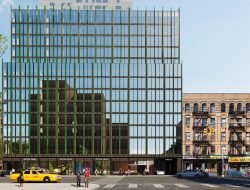In recent months, DivercityMag has devoted a series of articles to real estate renovation. After having defined some basic concepts, DivercityMag proposed a European inventory of the matter. A third part explained the advantages of a commercial renovation carried out in the city. Finally, we looked at the situation in Romania.
To (provisionally) close the subject, we offer you some key figures as well as a review of the major advantages of a renovation compared to a new construction.
According to Ademe (the French agency for ecological transition), the construction of a collective housing building consumes around 80 times more than a renovation. According to the same source, the consumption of raw materials is estimated at 1.35 tonnes/m2 for housing and 1.2 tonnes/m2 for the tertiary sector. To reduce waste and the consumption of materials, it is more favourable to renovate an existing building rather than to build everything from scratch.
And there is still work to be done: according to the European Union, nearly 110 million buildings in Europe will need thermal renovation by 2050.

© Brigitte Tohm
Values linked to renovation
Renovation is obviously first and foremost an important gesture for the environment. It means looking into the future, improving energy performance by opting for a decarbonisation policy, reducing the ecological impact of its activity, investing in biobased products, and saving natural resources while respecting the architectural heritage of the building.
But deciding to renovate also means taking into account strictly financial factors: optimisation of employee mobility and freight transport, reduction of the cost of waste, improvement of the efficiency of purchasing and logistics, etc.
But let’s be realistic.
Price is obviously a key variable. For owners of commercial and corporate buildings, it is natural to think that a new construction will be more expensive than the renovation of an older structure. But in reality, the cost comparison depends on many factors. Sometimes, renovating an older building can be more expensive, as it often raises compliance issues that are expensive to resolve. Also, preserving an old building and maintaining its historic beauty is often not as profitable as building a new commercial space. And then there are elements such as the return on investment, the multiple permits necessary for the renovation…
Finally, renovation also generates waste: all constructions combined, the rehabilitation of buildings in Europe by 2050 should, for example, generate 188 million windows and 155 million shutters and doors. What are we going to do with all that?
Today, most major European developers practice both renovation and construction. And their job is to offer their clients the project – and the way – that suits them best.
Tags: 2050 climate goals., Ademe, rénovation, sustainable construction







































